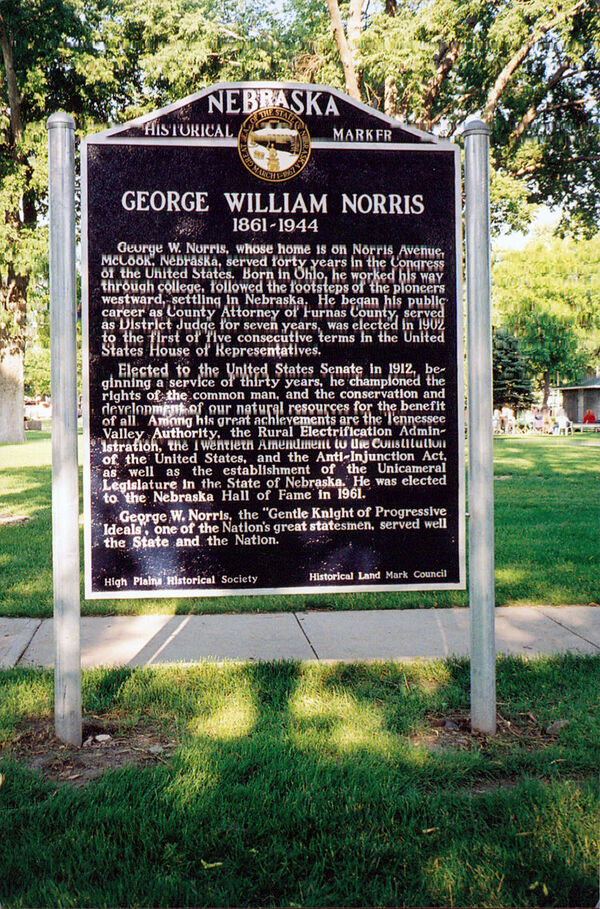Nebraska Historical Marker: George William Norris
Location
700-798 George Norris Ave, McCook, Red Willow County, Nebraska
View this marker's location 40.204279, -100.6258
View a map of all Nebraska historical markers, Browse Historical Marker Map
Marker Text
George W. Norris, whose home is on Norris Avenue, McCook, Nebraska, served forty years in the Congress of the United States. Born in Ohio, he worked his way through college, followed the footsteps of the pioneers westward, settling in Nebraska. He began his public career as County Attorney of Furnas County, served as District Judge for seven years, was elected in 1902 to the first of five consecutive terms in the United States House of Representatives. Elected to the United States Senate in 1912, beginning a service of thirty years, he championed the rights of the common man, and the conservation and development of our natural resources for the benefit of all. Among his great achievements are the Tennessee Valley Authority, the Rural Electrification Administration, the Twentieth Amendment to the Constitution of the United States, and the Anti-Injunction Act, as well as the establishment of the Unicameral Legislature in the State of Nebraska. He was elected to the Nebraska Hall of Fame in 1961. George W. Norris, the "Gentle Knight of Progressive Ideals", one of the Nation's great statesmen, served well the State and the Nation.
Further Information
Bibliography
Richard Lowitt, "George W Norris: A Reflective View," Nebraska History 70 (1989): 297-302
Richard Lowitt, “George W Norris: A Country Boy in an Urbanizing Nation,” Nebraska History 52 (1971): 233-238
Robert F Wesser, "George W Norris: The Unicameral Legislature and the Progressive Ideal," Nebraska History 45 (1964): 309-321
Richard Lowitt, “Populism and Politics: The Start of George W Norris’ Political Career,” Nebraska History 42 (1961): 75-94
Thomas Irvin, “The Political and Journalistic Battles to Create Nebraska’s Unicameral Legislature,” Nebraska History 92 (2011): 42-49
Marker program
See Nebraska Historical Marker Program for more information.
